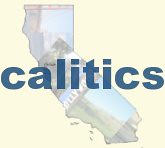Today In Economic Armageddon
The Federal Reserve joined forces with central banks across the world for a coordinated interest rate cut of 50 basis points. They're obviously throwing concerns about inflation out the window and trying to kickstart the credit markets, but Paul Krugman explains why that is not likely to work.
A quick illustration: in early July 2007, before the crisis, the target Fed funds rate was 5.25% and the rate on 30-day A2/P2 commercial paper — that is, CP issued by less-than-sterling borrowers — was 5.4%. On Monday of this week, the target Fed funds rate was 2%, down 325 basis points from pre-crisis levels, but the CP rate was 5.61% — up from pre-crisis levels.
So will this latest rate cut make any difference to borrowers? Maybe — but only to a few of them. We’re way past the point at which conventional monetary policy has much traction.
On top of this you have the Fed jumping into the commercial paper market, perhaps illegally, to get the rates they can't touch through monetary policy lowered. And they're starting to lend to private companies, putting more taxpayer dollars at risk.
These look like desperate attempts to stave off the inevitable, and nobody's really certain whether or not they'll work. What I think we have here is the policymakers in the White House trying to rescue their failed ideology and not the market. They want to use everything in their power (and a few things that aren't) to halt a slide to recession, as long as it doesn't look socialist and icky. What's more, they'd rather reward their friends on Wall Street than punish them, even though they have the opportunity to do either with the authority granted in the Paulson plan. The wiser move would be to follow Britain and just nationalize the banks already.
Britain’s largest banks are to be part-nationalised after the government took the momentous decision to pump tens of billions of pounds of public money into the sector to avert a banking collapse [...]
Under the UK bank rescue, the government is to put up to £250bn into the banking system in an effort to keep banks lending. It will also offer a guarantee to banks issuing medium term debt, which could mean backing a further £250bn of bank borrowings. But it is likely to demand dividend cuts and the end of big bonuses at the banks in return.
This is clearly what we should be doing here; a Swedish-style temporary nationalization with large equity stakes. It's cheaper and is more likely to be effective. And it looks like Emperor Paulson is slowly resigning himself to that reality:
Did anybody else notice that when Hank Paulson was describing in his press conference today what the Emergency Economic Stabilization Act enables Treasury to do, the first thing he listed was “to inject capital into financial institutions”?
That wasn’t how Treasury initially advertised its Troubled Asset Relief Program. It was sold as a way to get the market for mortgage securities moving (or, to use the jargon, liquid). Lots of academic economists objected that liquidity wasn’t the problem, it was insolvency. What Treasury needed to do was recapitalize financial institutions and take equity stakes in return […]
None of the people asking questions at the press conference really seemed to pick up on this, of course (&%%$# Washington journalists!). Along with Paulson’s affirmation that the FDIC was going to use its “systemic risk” powers to protect depositors and unsecured creditors “as appropriate,” I take it as one more sign that we’re headed toward a Swedish solution of our banking crisis—recapitalization and temporary nationalization of much of the banking system.
The second half of this needs to be a real stimulus bill for ordinary Americans which includes aid to state and local governments as well as infrastructure investment. And that's exactly what Nancy Pelosi is calling for.
DENVER - House Speaker Nancy Pelosi said Wednesday that a $150 billion economic stimulus plan is needed now because of the faltering economy and she may call the House into session after the election to pass it [...]
The Senate is expected to be back at work after Election Day to complete a public lands bill and perhaps deal with other matters, such as a measure to extend unemployment benefits. The House also could return to consider a stimulus plan and additional issues in a lame-duck session before the newly elected Congress takes over in January.
"We may have to go back into session before the next Congress," Pelosi said.
Pelosi said a stimulus package would create jobs by investing in public works, increasing food stamps benefits and extending unemployment insurance for the long-term jobless. She said lawmakers need to "hunker down" and look closely at the federal budget for possible savings, and reconsider whether the U.S. can afford to fight "a war without end" in Iraq.
Reality is intruding on the fantasy scenario that we can continue to prop up the financial system with funny money. The reckoning is going to be painful but we should at least start to head in the right direction.
Labels: banking industry, Britain, commercial paper, Congress, Federal Reserve, financial industry, Gordon Brown, Henry Paulson, interest rates, Nancy Pelosi, nationalization, Treasury Department





